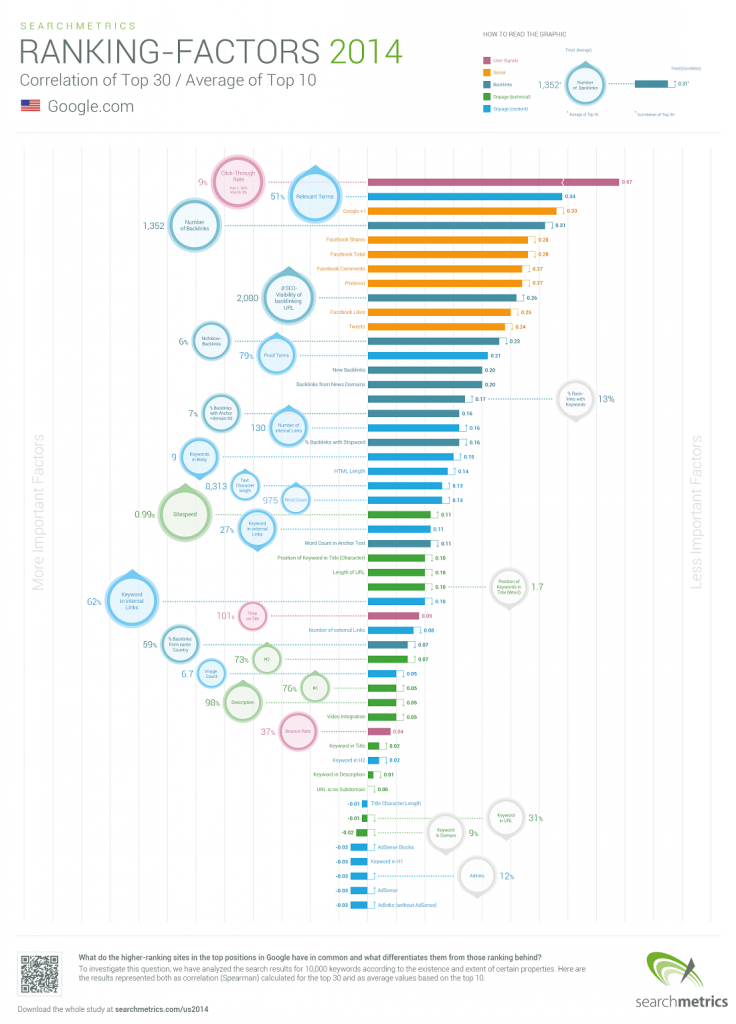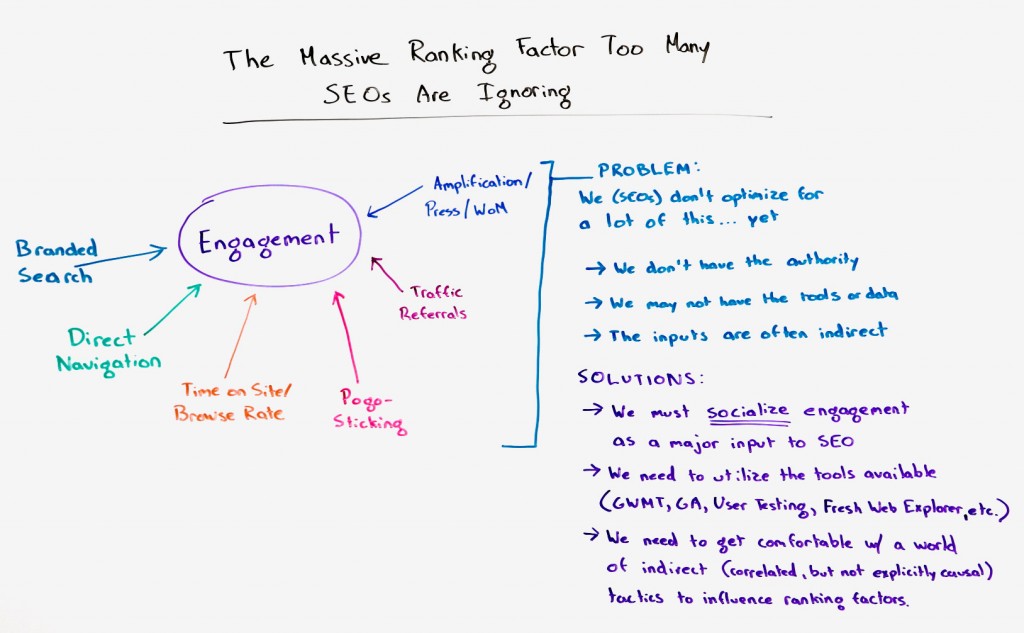
Website usability and user experience (UX) considerations are becoming vital factors for search marketers. Not only are usability/UX factors important for the more obvious reasons in relation to driving conversion, they’re also important factors in relation to SEO and organic search rankings.
There are only a limited number of directly influential variables that search engines can take into consideration when evaluating a website. These include the traditional/well-known variables such as keywords, link equity and website architecture/structure. However as search engines strive to provide the best possible search results they’re now broadening their perception and measurement of website integrity.
Major search engines such as Google now rely on indirect user engagement and customer interaction data for additional metrics to support the measurement of website integrity. Generally speaking search engines have the ability to understand the types of pages that satisfy the needs of their searchers, most with common traits such as:
- Ease of use
- Ease of navigation
- Ease of comprehension/understanding in relation to content
- Delivery of actionable information relevant to the search query
- The use of intelligible design and accessibility of modern browsers (including mobile)
- The use of high quality, legitimate and credible content
With this in mind, engagement metrics surrounding usability and user experience often provide indirect but measurable metrics to gauge a website’s popularity though which search engines can interpret higher quality sites.
Engagement Ranking Factors
In the 2014 Ranking Factors analysis by SearchMetrics user signals such as click-through rate, bounce rate and time-on-site were measured for the first time to analyse their correlation with search engine rankings.

Image Source: http://www.searchmetrics.com/knowledge-base/ranking-factors/
As you can see engagement metrics feature quite prominently within the top ranking factors with click-through-rate becoming one of the most prominent. These are the types of factors that are now increasingly important in relation to website integrity and correlation with organic search rankings.
Further metrics can include the level/volume of branded search queries, direct navigation metrics, the effect of pogo-sticking, external traffic referral, and amplification in the form of press, PR and word of mouth.
Rand Fishkin did a great Whiteboard Friday on this subject which I would highly recommend watching.
However, such metrics are often overlooked or sidelined within the search marketing industry in favour of the more traditional SEM techniques, such as link acquisition, which are quite often still perceived as the more influential ranking factors.
Analysing The User Experience
The analysis of user experience and user engagement metrics can often be a difficult process for a number of reasons. Firstly there are no hard and fast rules from search engines as to what types of engagement metrics contribute towards search engine rankings. Google has confirmed that they do analyse pogo-sticking and they do analyse certain forms of amplification and branding, but as always the details of each measurement are vague.
Furthermore the perceived impact of certain engagement metrics can vary tremendously between industries and depending on the type of search query. A high bounce rate and low time-on-site may ring alarm bells for certain websites in certain instances, but for others these factors may not necessarily be detrimental. For example, a customer searching for “how to contact High Position” are likely to reach our Contact Us page through which they will obtain our contact details and end their journey. As a result, metrics such as time-on-site or bounce rate in relation to that particular page may initially indicate a problem, whereas the reasons behind the metrics are accountable. Of course that’s just a hypothetical example but you get the idea.
Where to Start?
A good starting point from an on-site perspective is to dive into your Google Analytics data investigating core top level metrics such as bounce rate and average time-on-site on a page-by-page basis to ascertain which pages are potentially not performing to their full potential.
Perhaps consider grouping pages by type i.e. news or blog pages, category pages, product pages and so forth to ascertain if particular groups of pages perform better or worse than others. Then manually review those pages to see if there are any obvious cause for concern which may hinder the user experience, such as low-quality content, poor navigation, lack of call-to-action and so on.
Similarly you can analyse page groups or even individual pages against the traffic source/medium to ascertain if particular sources of traffic positively or negatively affect engagement.
Furthermore undertaking a process of conversion rate optimisation may prove beneficial. Through the use of unbiased user experience testing you may discover ways in which your web pages can be further improved.
Also you should consider reviewing elements such as Meta Descriptions and Title tags which may influence CTR (click-through-rates). And if you’re not using it already, use the Google Webmaster Tools Search Queries report to determine CTR for key queries and URLs and see if there are any potential improvements which may influence the CTR.
Top Tip: If you’re running an AdWords campaign I often recommend utilising data from top performing ads, such as any ad text and any calls-to-action with proven ROI, to fuel the creation of Meta Descriptions and Title tags. If the approach works for paid search ads why not utilise the approach for organic search listings?
Conclusion
The possibilities for on-site engagement analysis are vast with plenty of opportunity for data analysis, and we haven’t even begun to discuss the influence of off-site factors such as brand strength and authority, brand amplification and social engagement! I hope to delve a little deeper into this in the future.
User engagement is an extensive subject but it’s most certainly becoming increasingly important; therefore managing the user experience and monitoring engagement metrics should form a core role in your search engine marketing strategy.
If you have any questions about usability and user engagement please feel free to leave a comment below or contact us.












You may also be interested in SEO ranking factors correlation with Alexa Rank https://webicron.com/correl